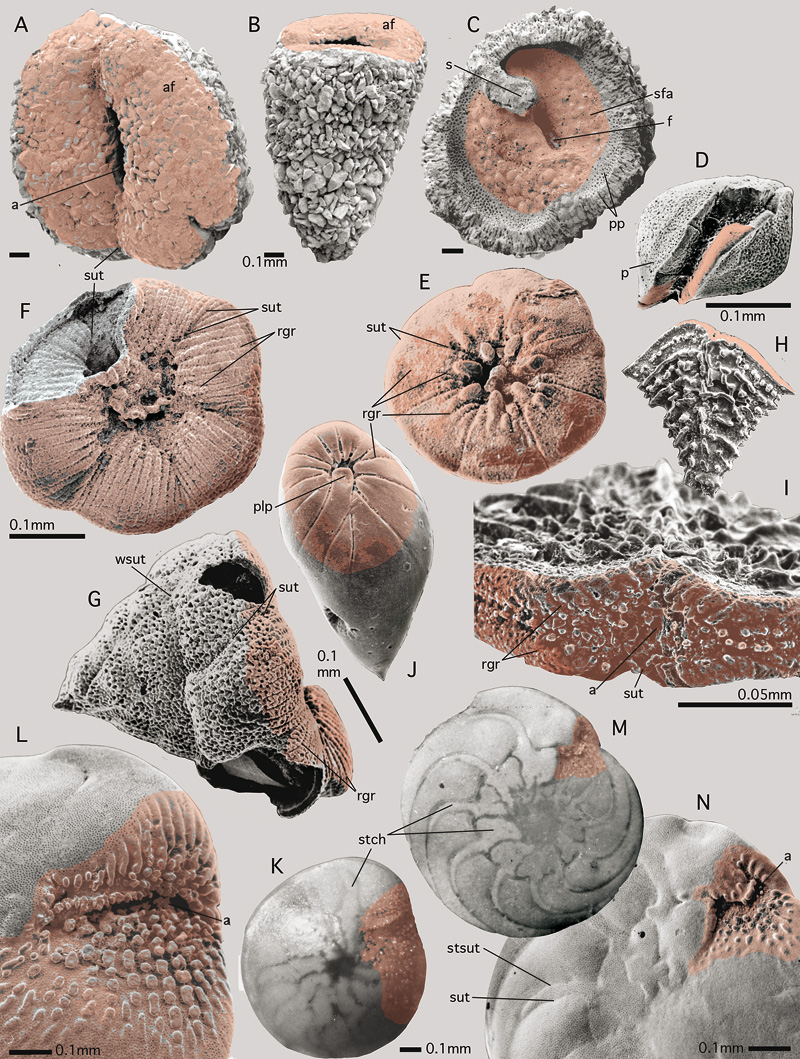
Figure 48: Faces (coloured red) in biserial and spiral forms. SEM graphs (if not specified otherwise) of specimens from the Gulf of Aqaba, Red Sea. Recent.
A-C: Textularia aff. goesi , apertural and lateral views of intact specimens and frontal view of broken specimen showing septal face. Note the smooth surfaces characteristic
of the faces of many agglutinated forms. D-E: Discorbinoides sp. A in et alii, 1993. Plastogamic pair and plastogamic umbilical face with radial grooves. F-G: Glabratellina sp. A in et alii, 1993. Ventral view showing plastogamic ventral face with radial grooves and lateral view showing shell whorls with their sutures. H-I: Bolivinella elegans , a lamellar-perforate, biserial form with known plastogamic reproduction,
that has radial grooves on its face. J: Floresina spicata ( et )
has a smooth face with few radial grooves and in addition grooved septal sutures. A
(plastogamic?) plate covers the narrow umbilicus. As yet, plastogamy has not been observed in vivo in this species. K-L: Amphistegina lobifera , Megalospheric specimen in
incident light micrograph, ventral view and detail of apertural face. Note the extension of the ornamented surface
for a notable distance over peripheral-ventral parts of the previous whorl. M-N: Amphistegina bicirculata , megalospheric
specimen in incident light micrograph, ventral view and detail of apertural
face. Note comparatively much smaller ornamented surface corresponding to lower water energy in its deeper habitat.
a: aperture; af: apertural face; f: foramen; p: pore; plp: plastogamous (?) plate; pp: parapore; rgr: (plastogamous) radial grooves; sfa: septal face; stch: stellar chamberlet; stsut: stellar suture; sut: (chamber) suture; wsut: whorl suture.